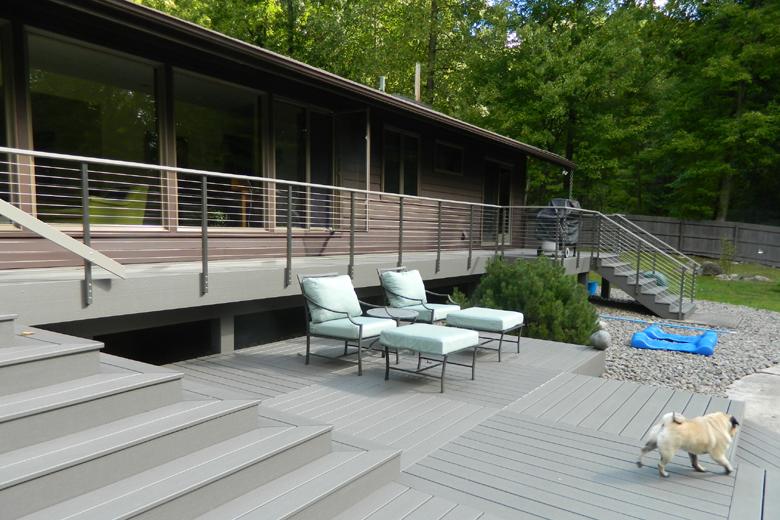Structurally and aesthetically, today’s cable railing systems have come a long way. They are sleek and fashionable, offer many design options, provide an unobstructed view, and effortlessly complement different home styles. Above all, cable railing systems are easy to install and maintain.
However, questions occasionally come up about the safety of these cable railing structures. For example, some have expressed concerns about the “ladder effect,” worrying that it creates a climbing risk.
To ensure that cable railings are a safe option for your home, let’s clarify a few points about these types of railings:

Addressing the “ladder effect”
People have voiced concern about the “ladder effect” noting that the ladder-like nature of cable railings presents a climbing risk, especially among young children. However, is this concern based in fact? Are children likely to climb and fall off cable railings?
The National Association of Home Builders (NAHB) and National Ornamental and Miscellaneous Metals Association (NOMMA) have both carried out studies on this particular matter. In both cases, findings show that the risk is minimal. Listing other deck hazards are more dangerous that the ladder effect. For example, studies show that patio furniture exposes more children to fall danger. This happens when pushing chairs against the railing and climbing onto the seat. Thus puts them at the top of the railing.
Data presented to the International Code Council (ICC), for instance, shows that falls from railings among persons aged 1.5 to 4 years account for just 0.032% of all fall injuries in that age group. To put these figures into context, windows, doors, and even fences are a higher probability of fall injury concerns. Regardless of the railing installed, adults need to be vigilant in safety observation and design when children will be present.
Proper installation makes cable railings safer
The deflection of cable is one of the most important safety issues regarding cable railing. Cable should not allow a 4-inch ball to pass between cables. Using the stiffest cable, proper spacing, following all manufacturer instructions are all keys to achieving this.
The enhanced strength and durability of modern cable railings are particularly important. Especially in ensuring the safety of everyone in the home. Cable railings are very high strength. The cable being the strongest part of the system in regard to tensile strength. Under tension, cable railing has limited deflection. Thus ensuring that this is the case involves a proper selection of cable, proper tensioning and proper spacing. Only the 1×19 cable should be used in a minimum of 1/8” diameter. Cable should never be spaced more than 3” apart. As well, post spacing should never exceed 4 feet without a stabilizing (anti-deflection) device installed.
Properly installed cable railings will maintain tension. However, it is normal to need re-tensioning at least once after the initial install. Cable should be observed. Then re-tensioned if it has any relaxing or stretch in the cables.
Standard installation guidelines provide safety
To ensure further safety of children and everyone else in the home, builders abide by multiple guidelines and requirements. These guidelines include code requirements for all railings including load requirements, spacing and install methods. Unfortunately, cable railing can be done without using products that are independently certified to meet these codes.
To check cable spacing code enforcement officers use the 4-inch sphere rule. Stating a 4-inch sphere must not pass through any gap in the cable railing system with reasonable force applied. Load requirements, meanwhile, address the maximum pressure that a cable railing can bear at any specific point. A standard cable railing must withstand at least 200 lbs. of force.
Follow the direction of experts
Cable railing is a fairly simple concept. And can physically be installed with any cable and a wide variety of hardware. That said, just because you can doesn’t mean you should. Therefore, as long as the cable railing is provided by a qualified supplier and installed per code. As well as following qualified manufacturer instructions, you will be on your way to the safe installation of your new cable railing.